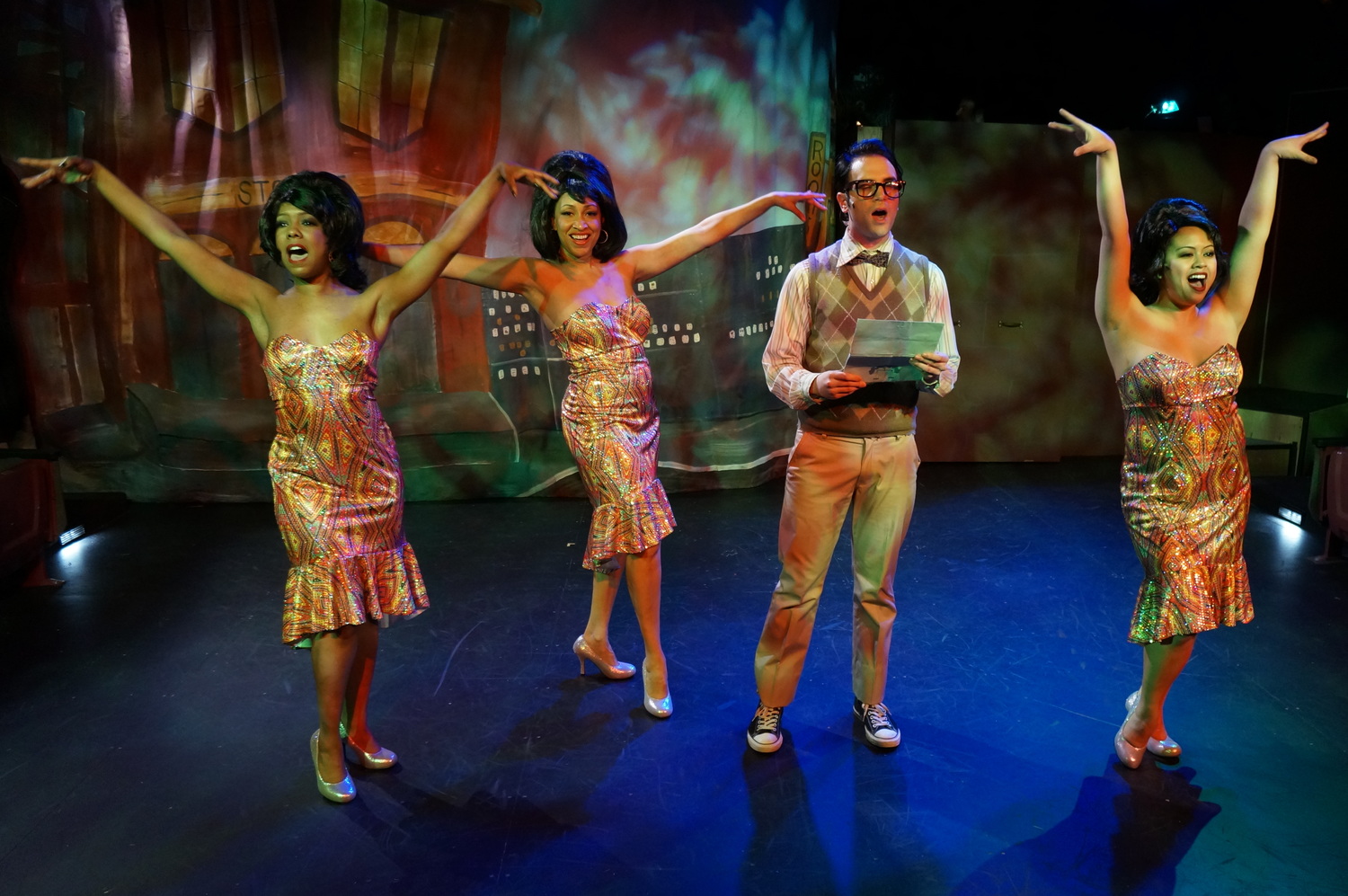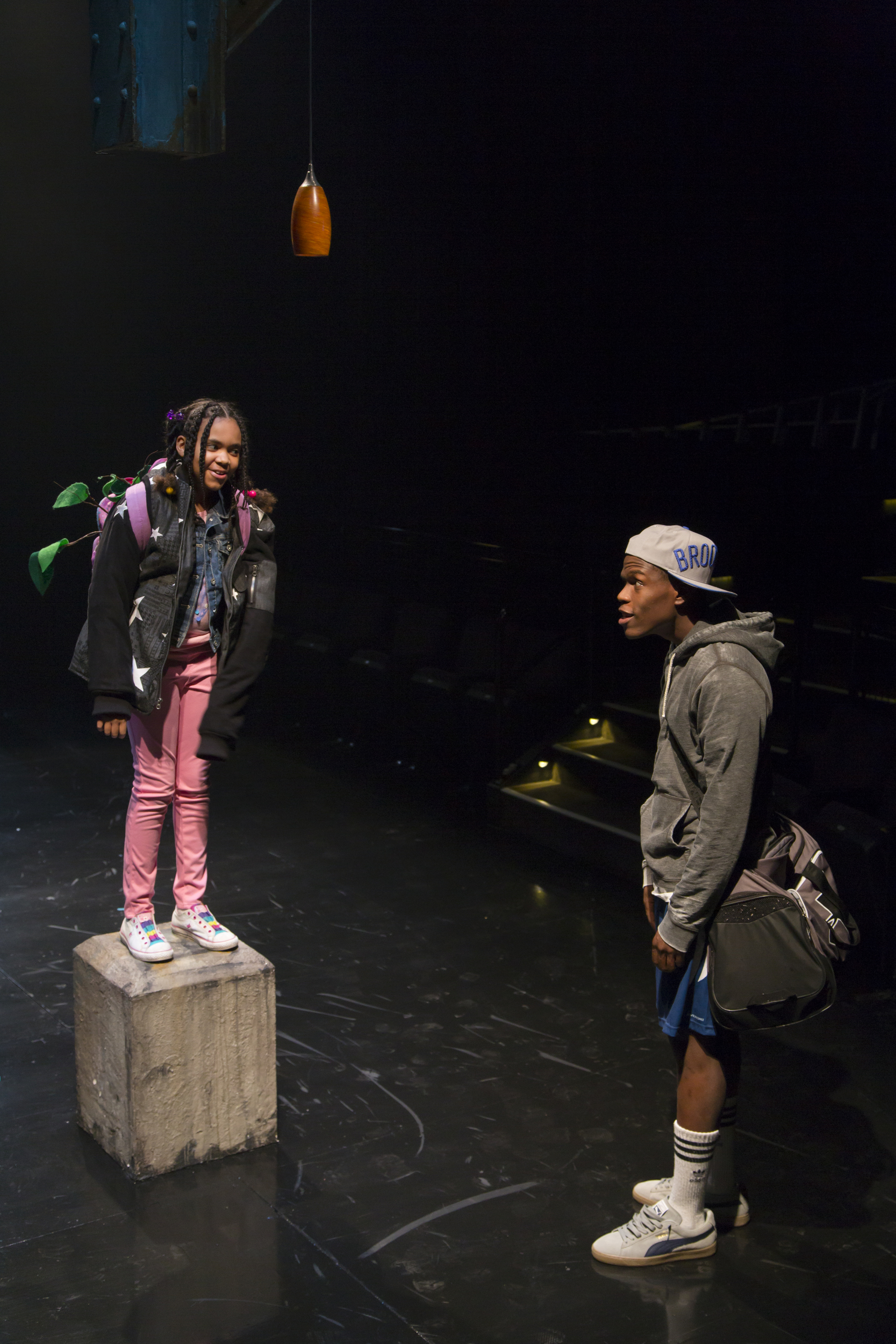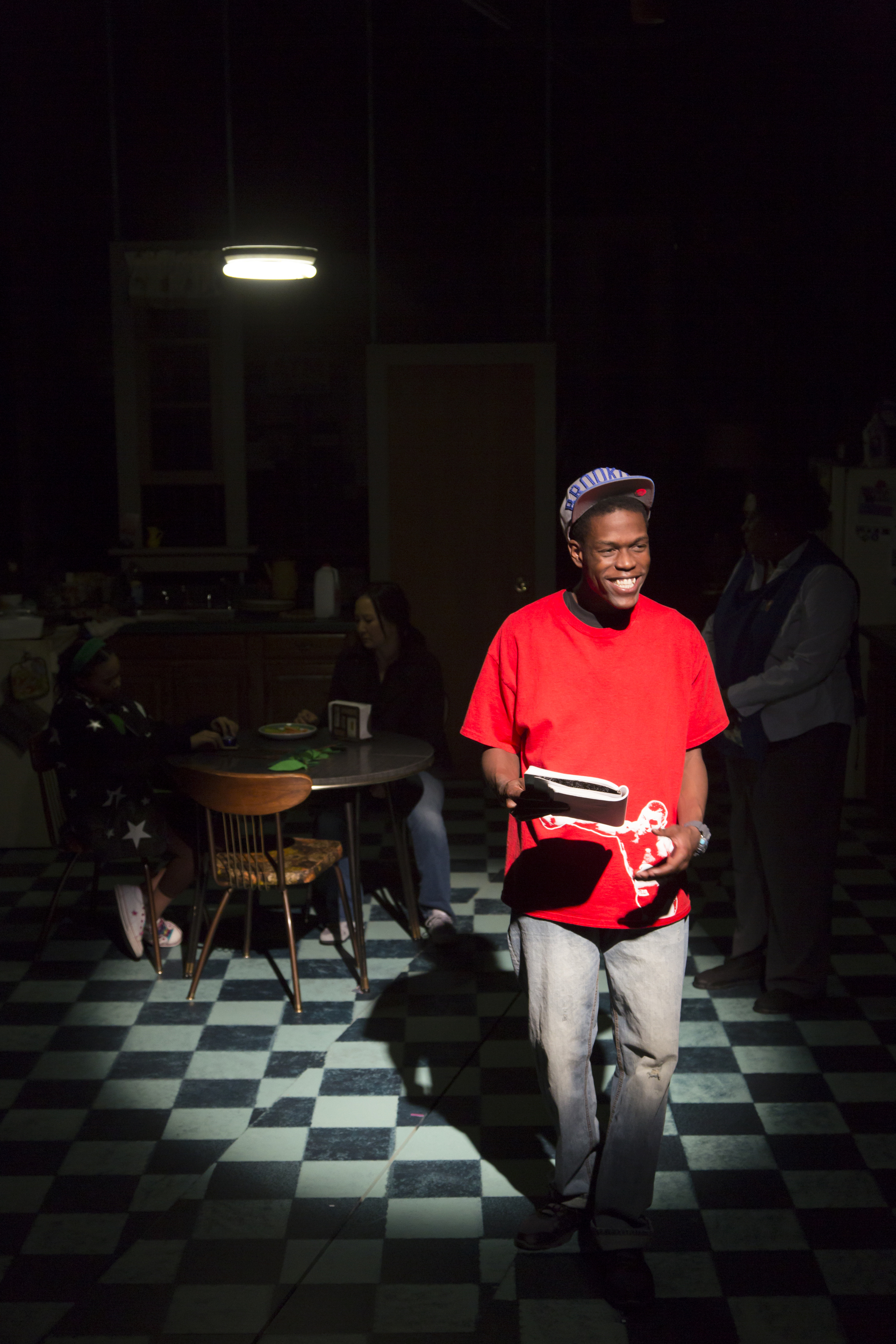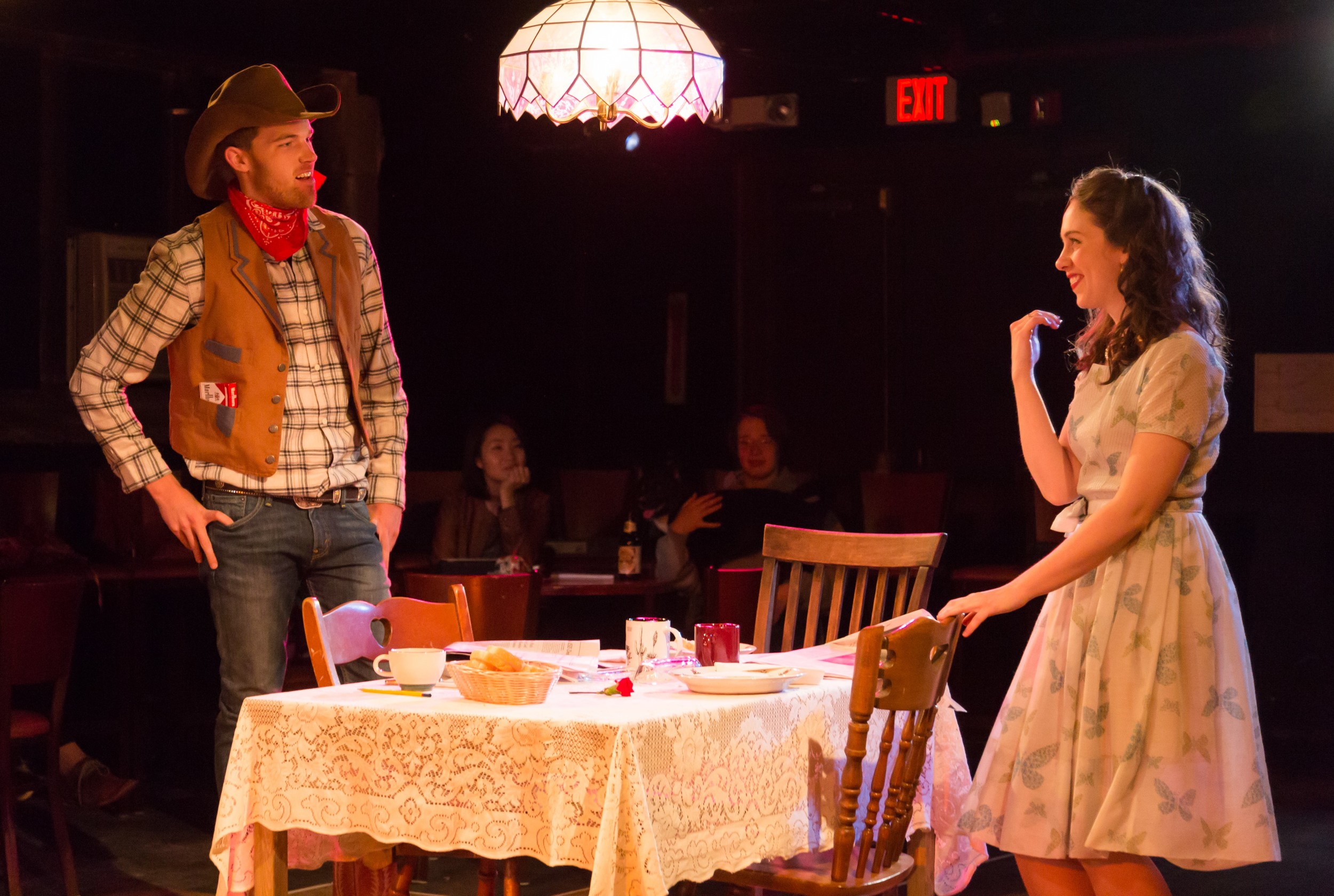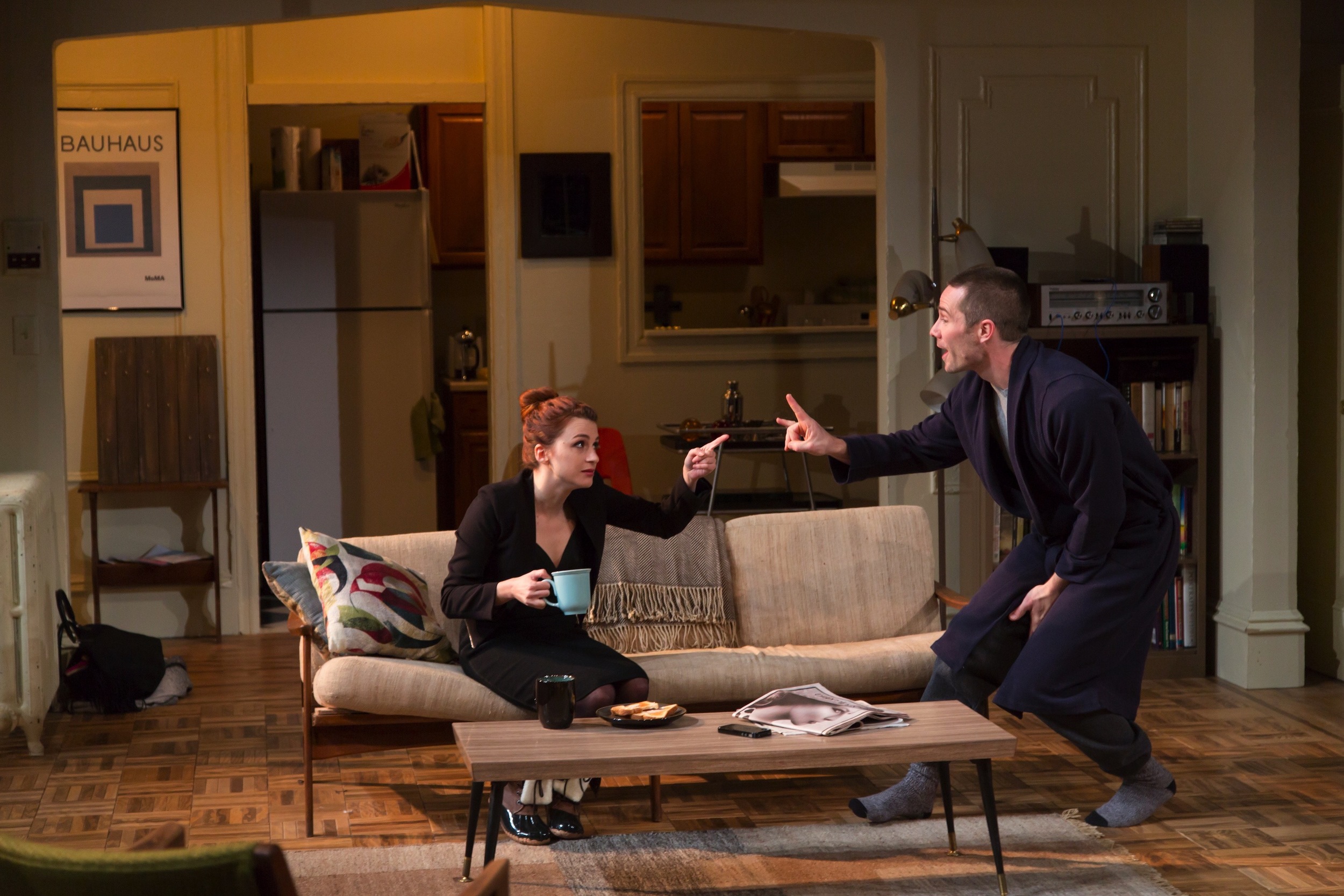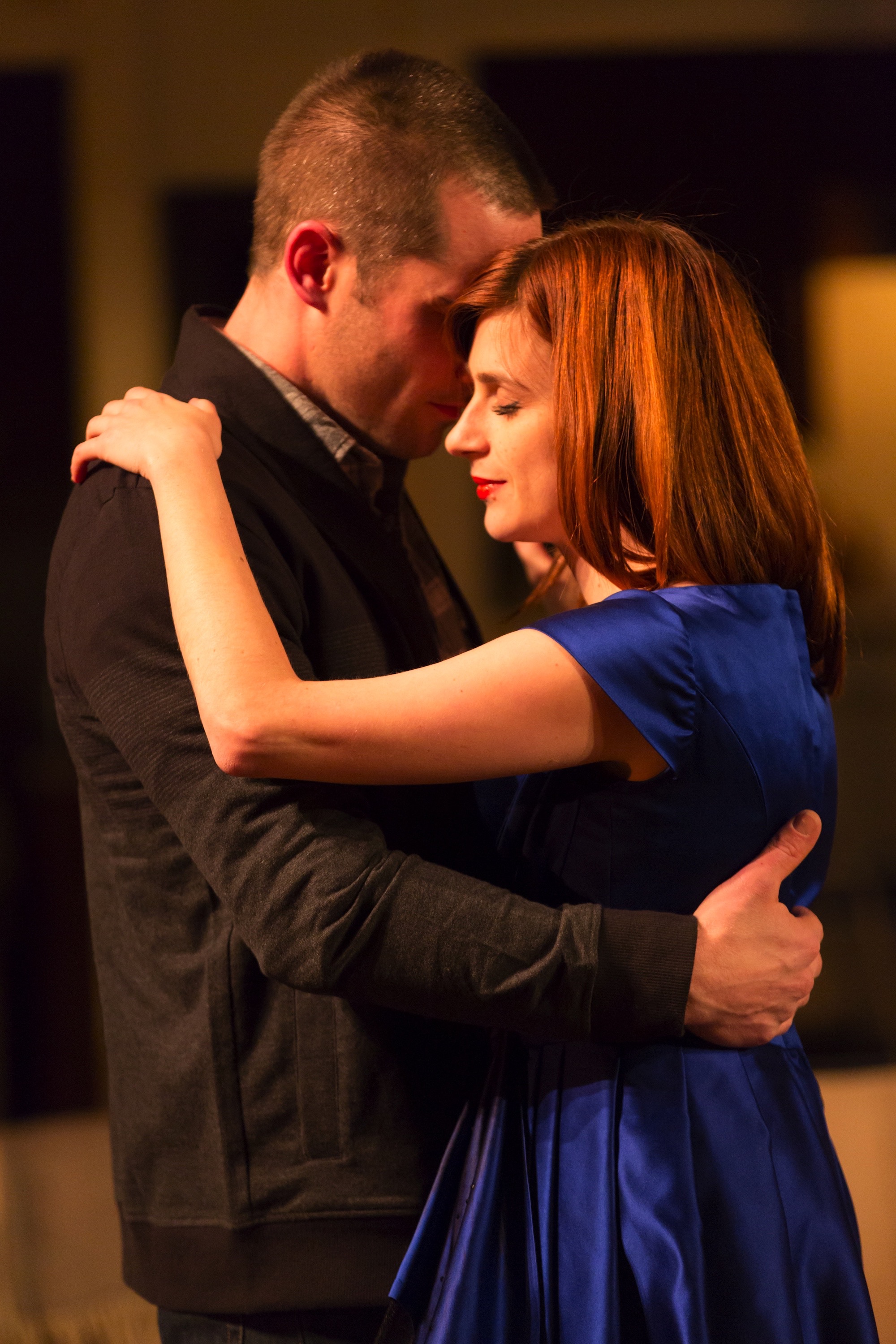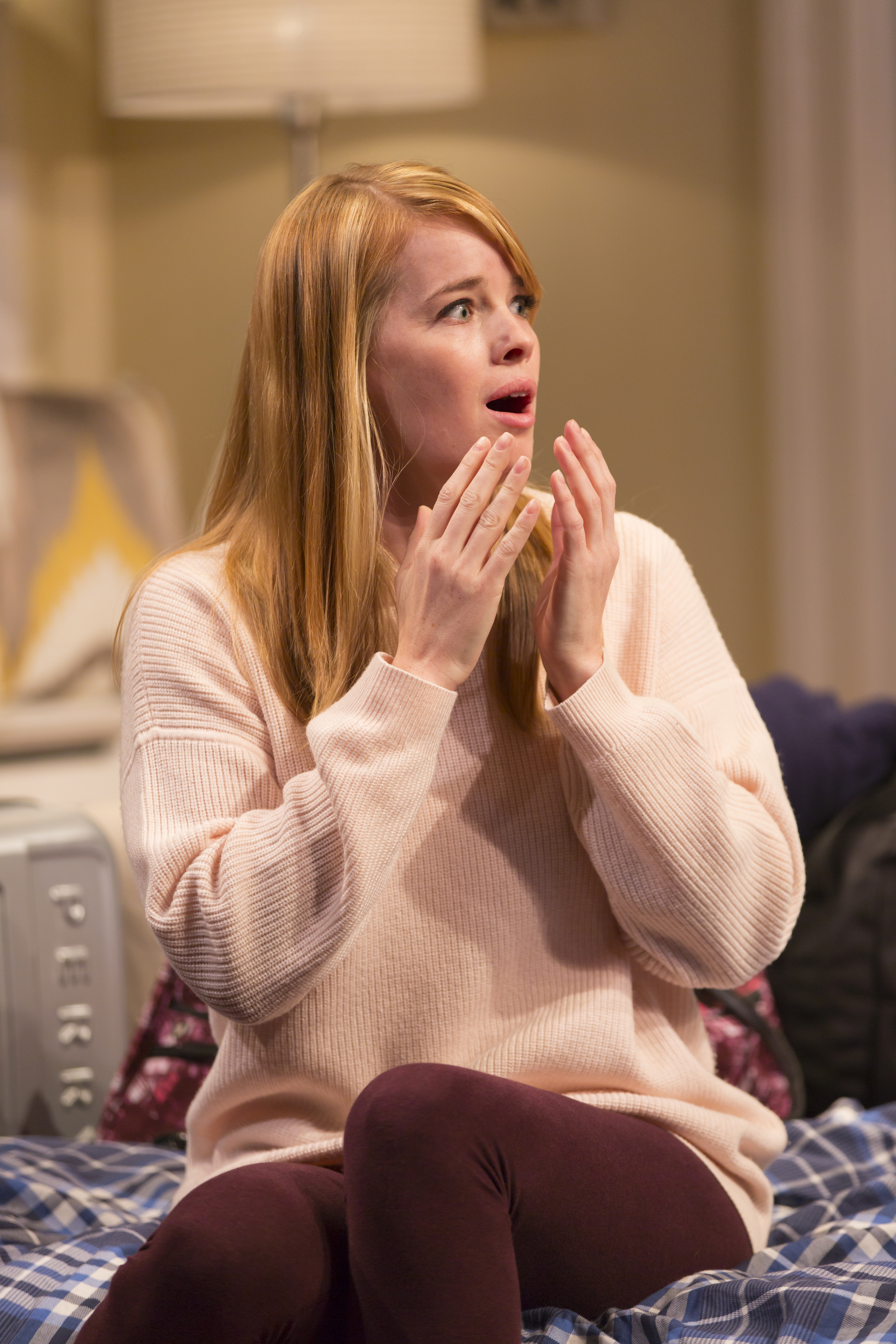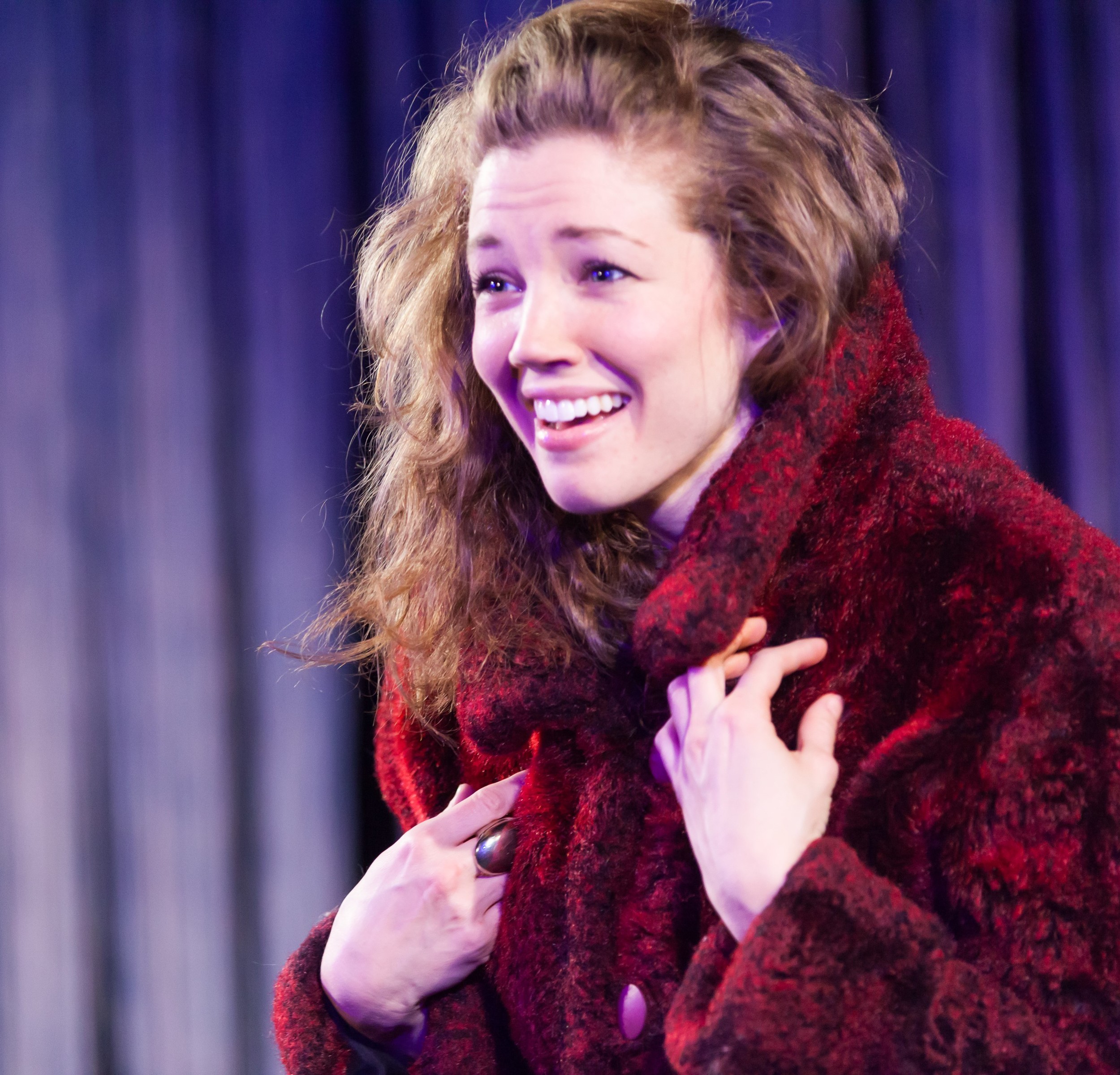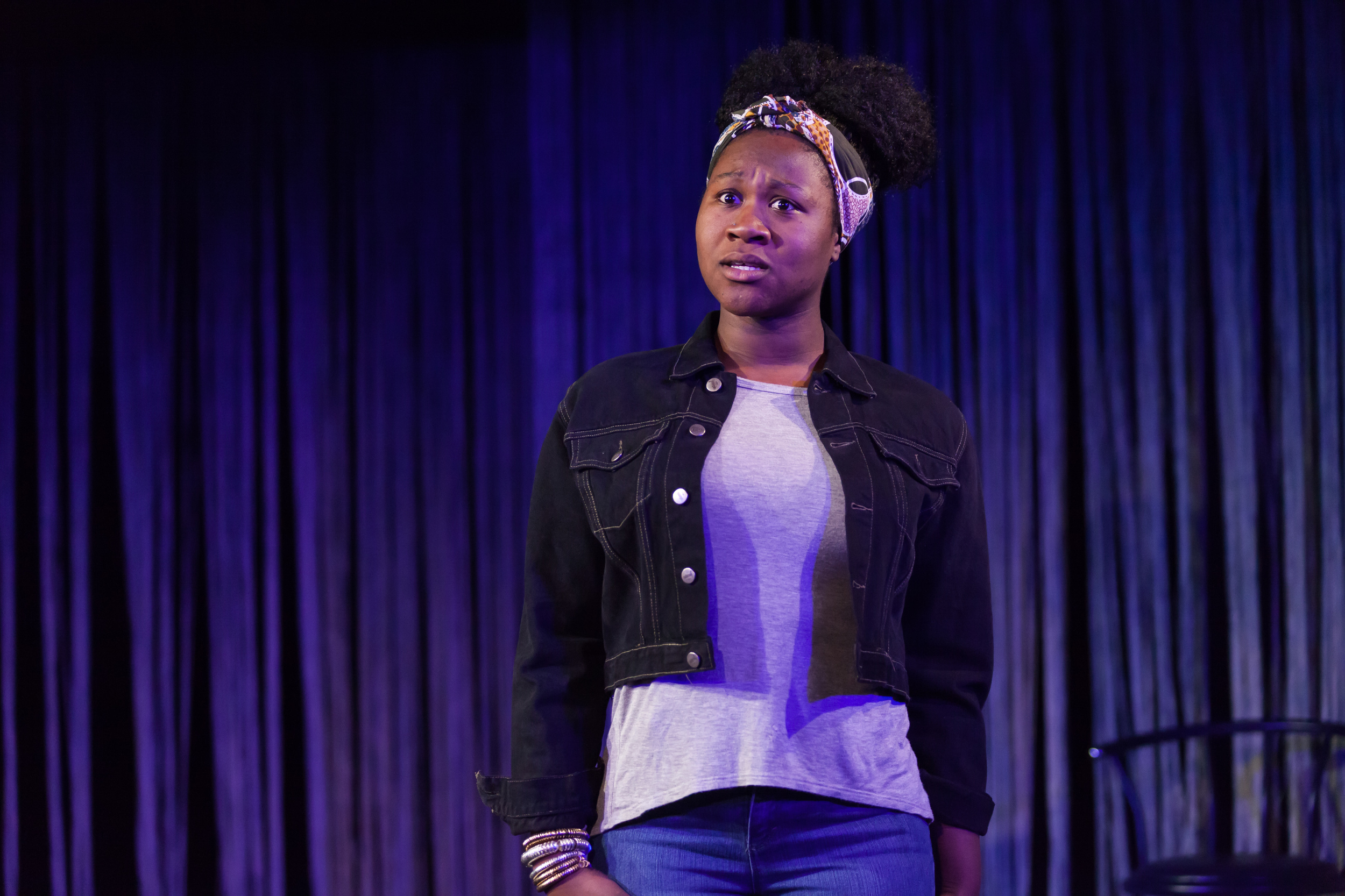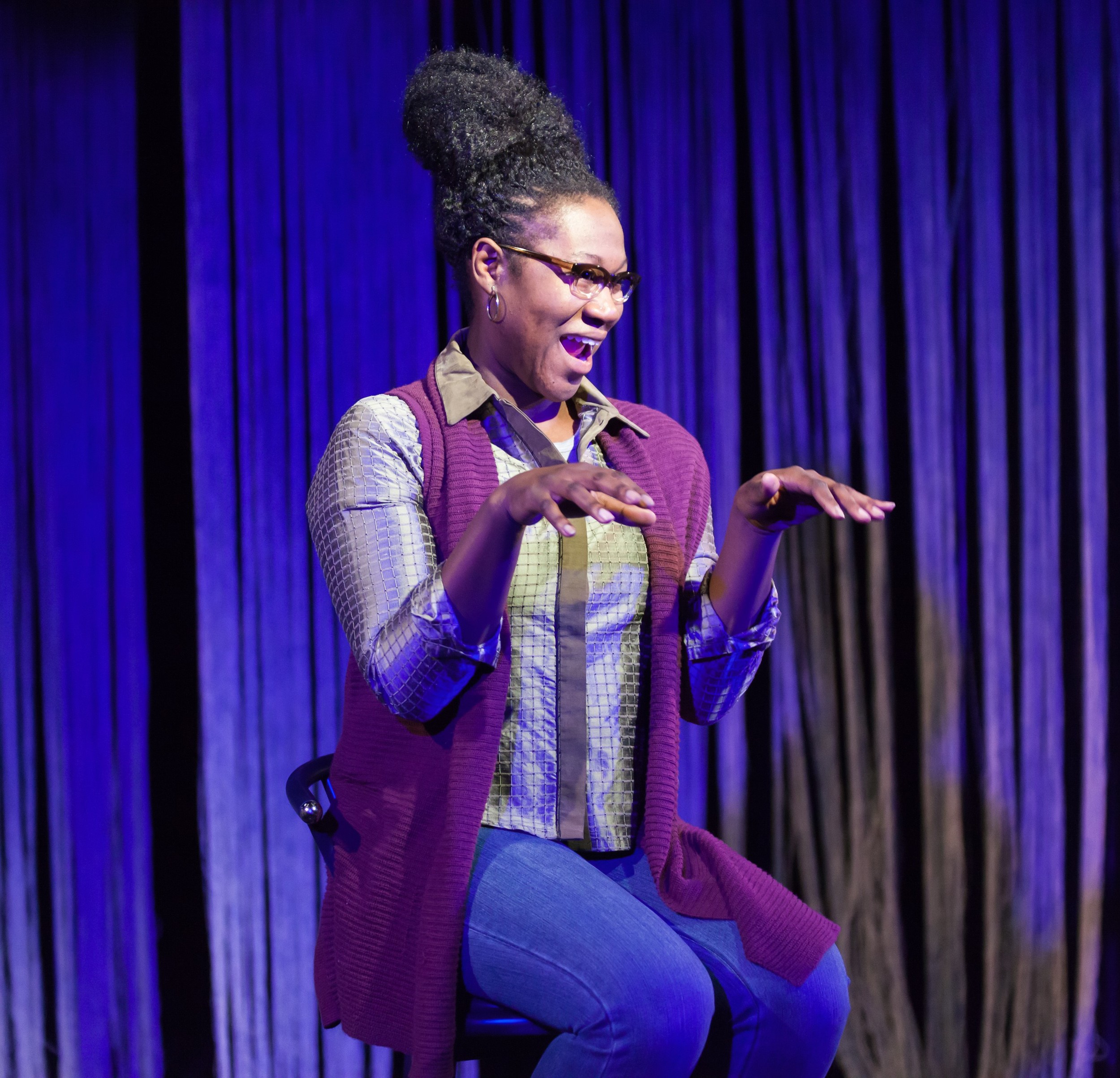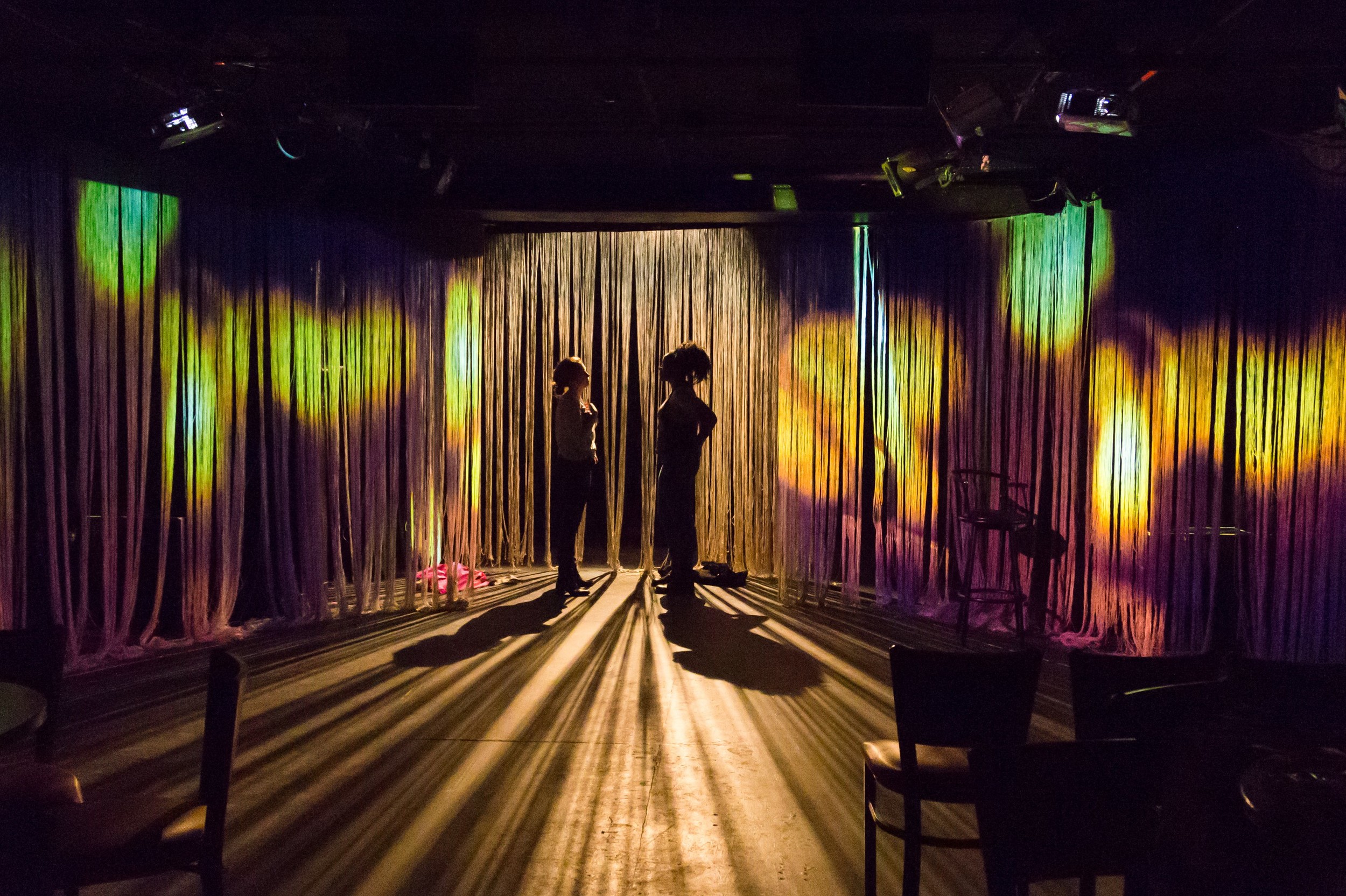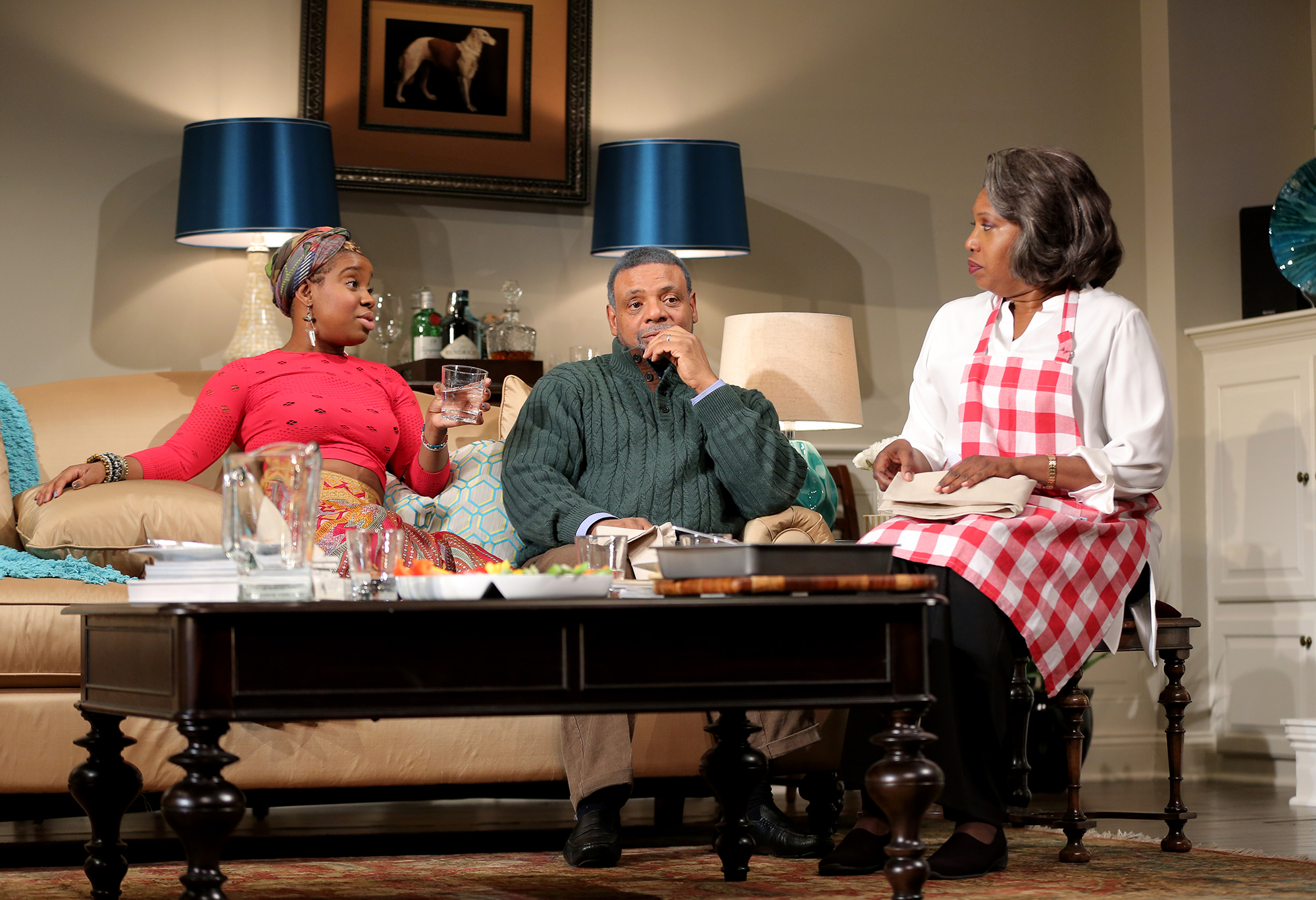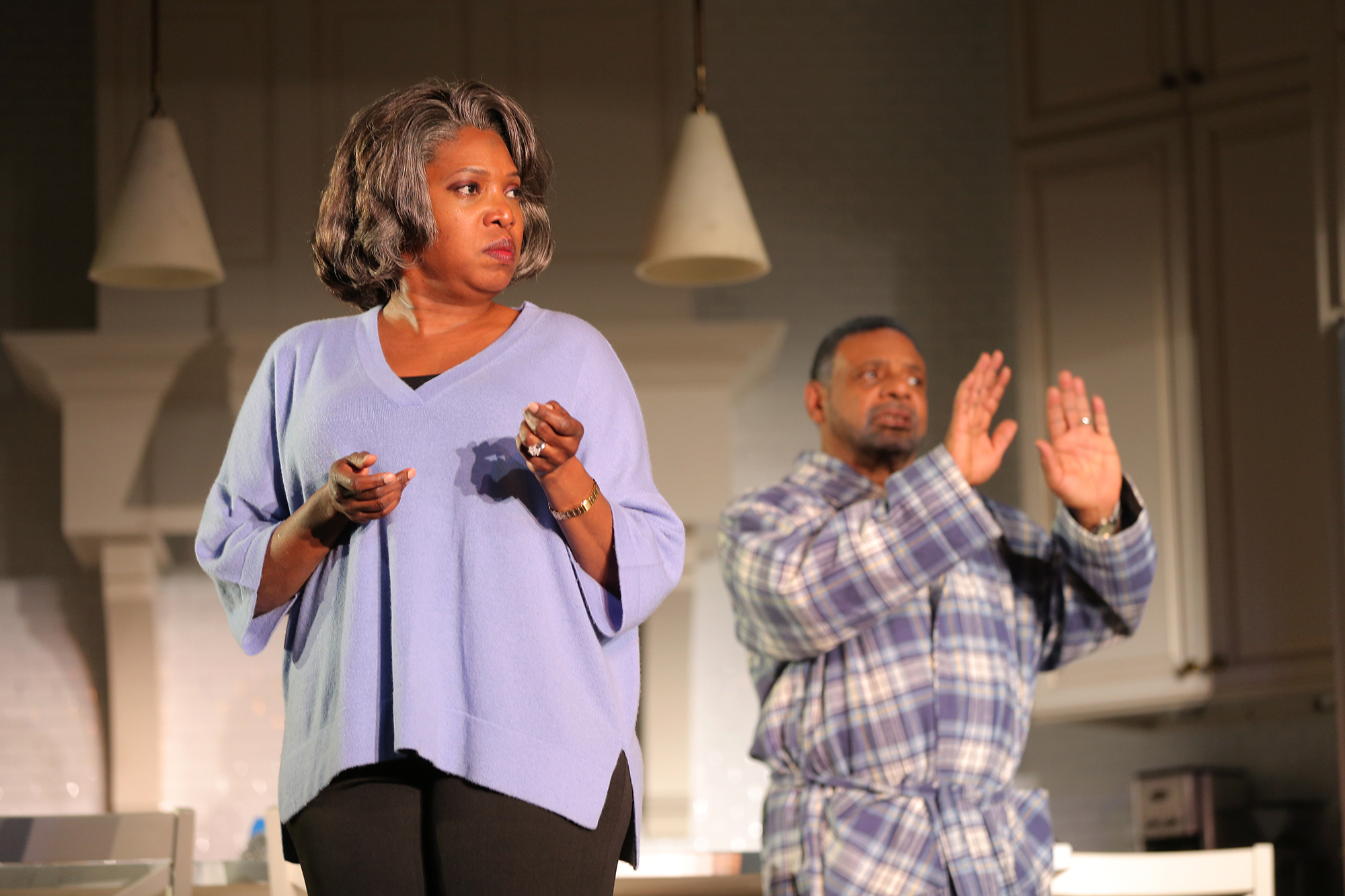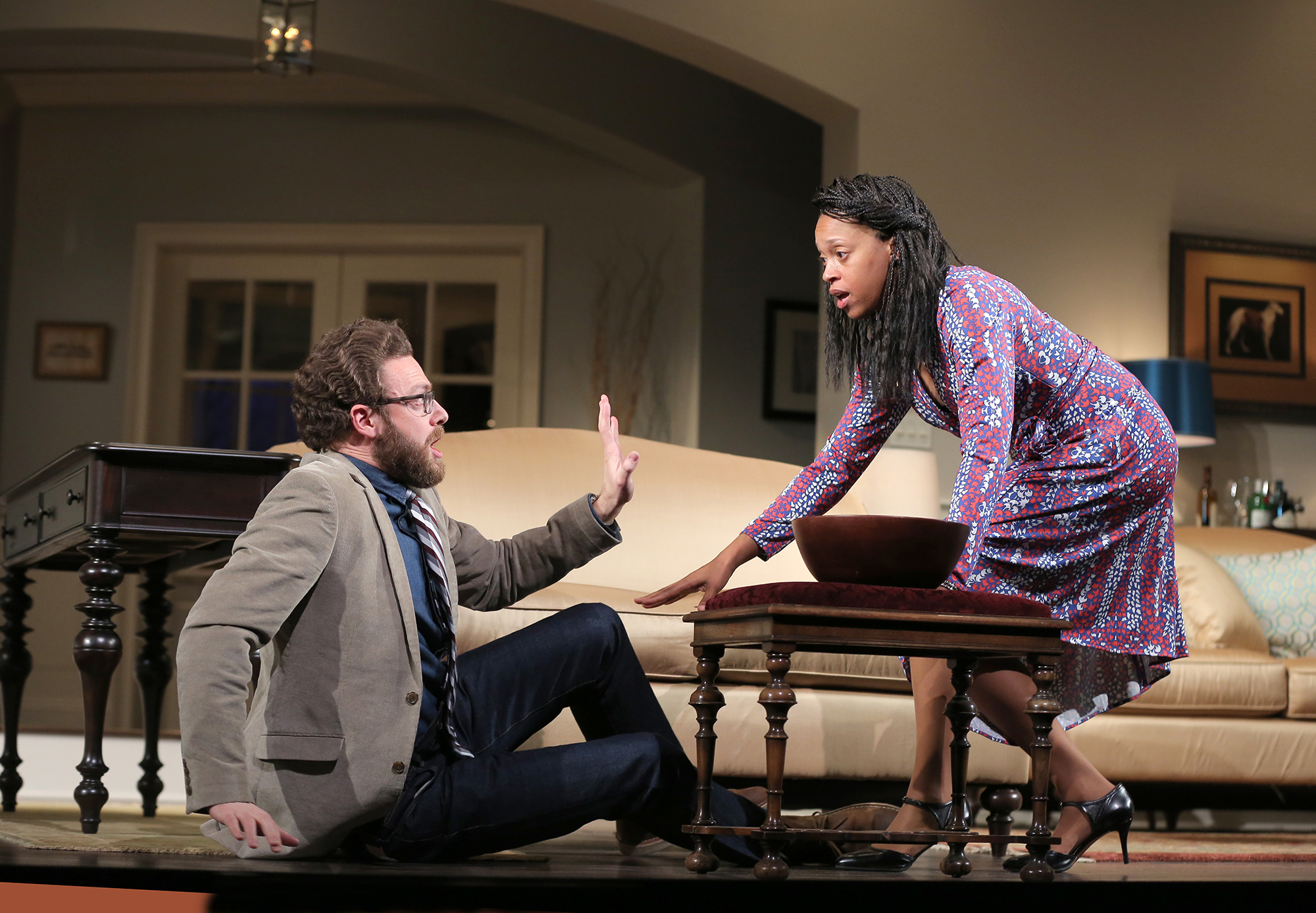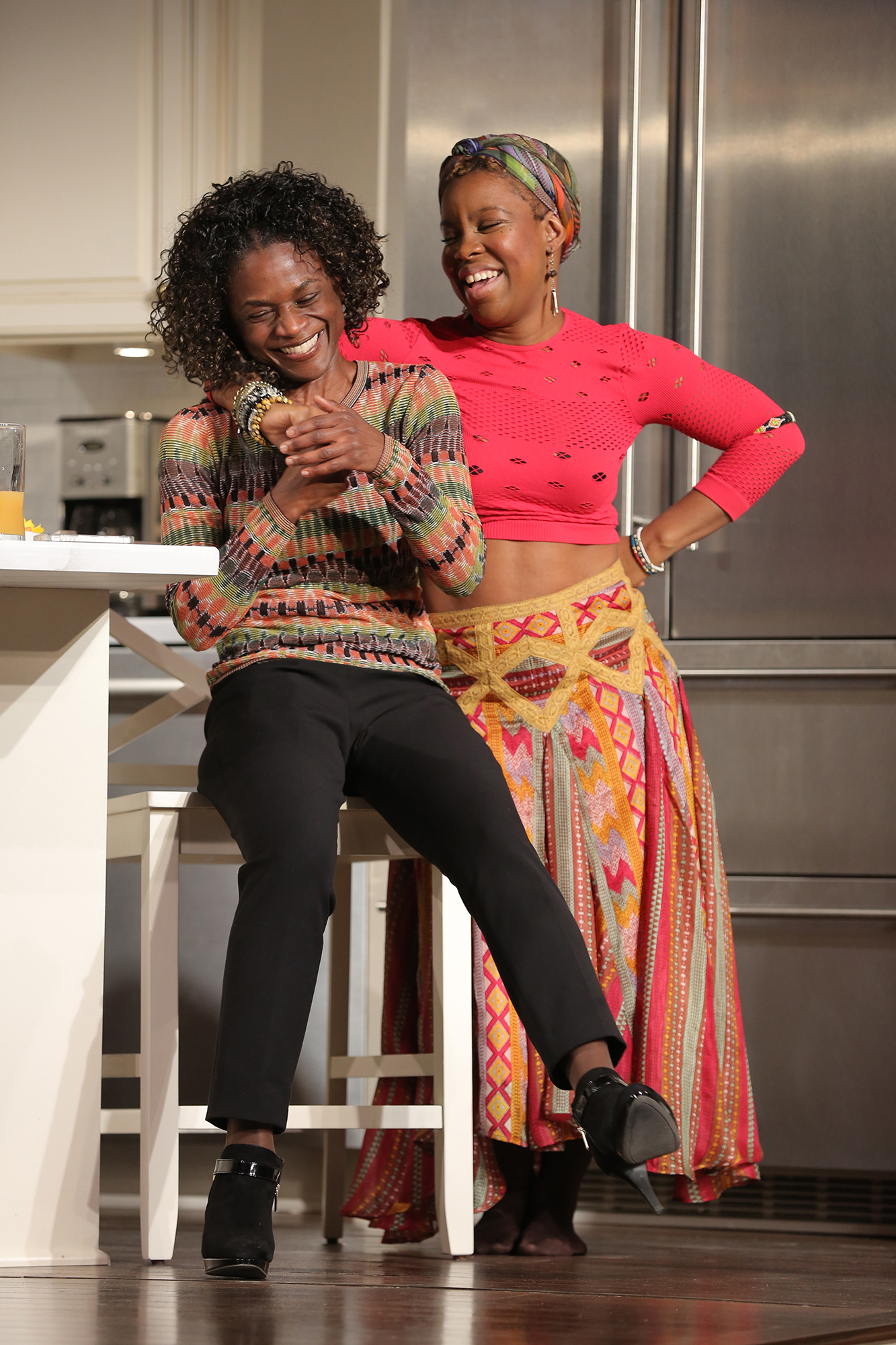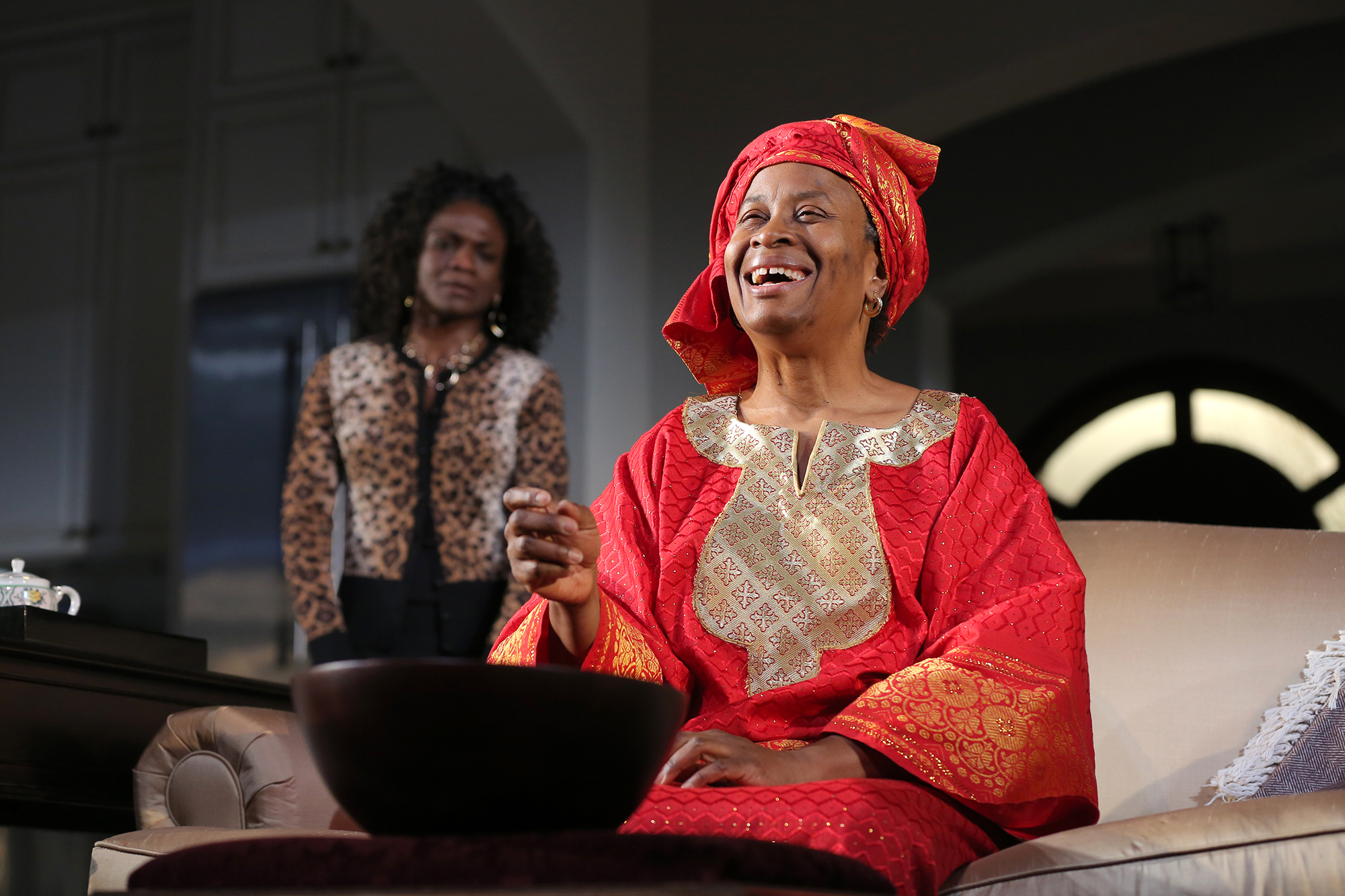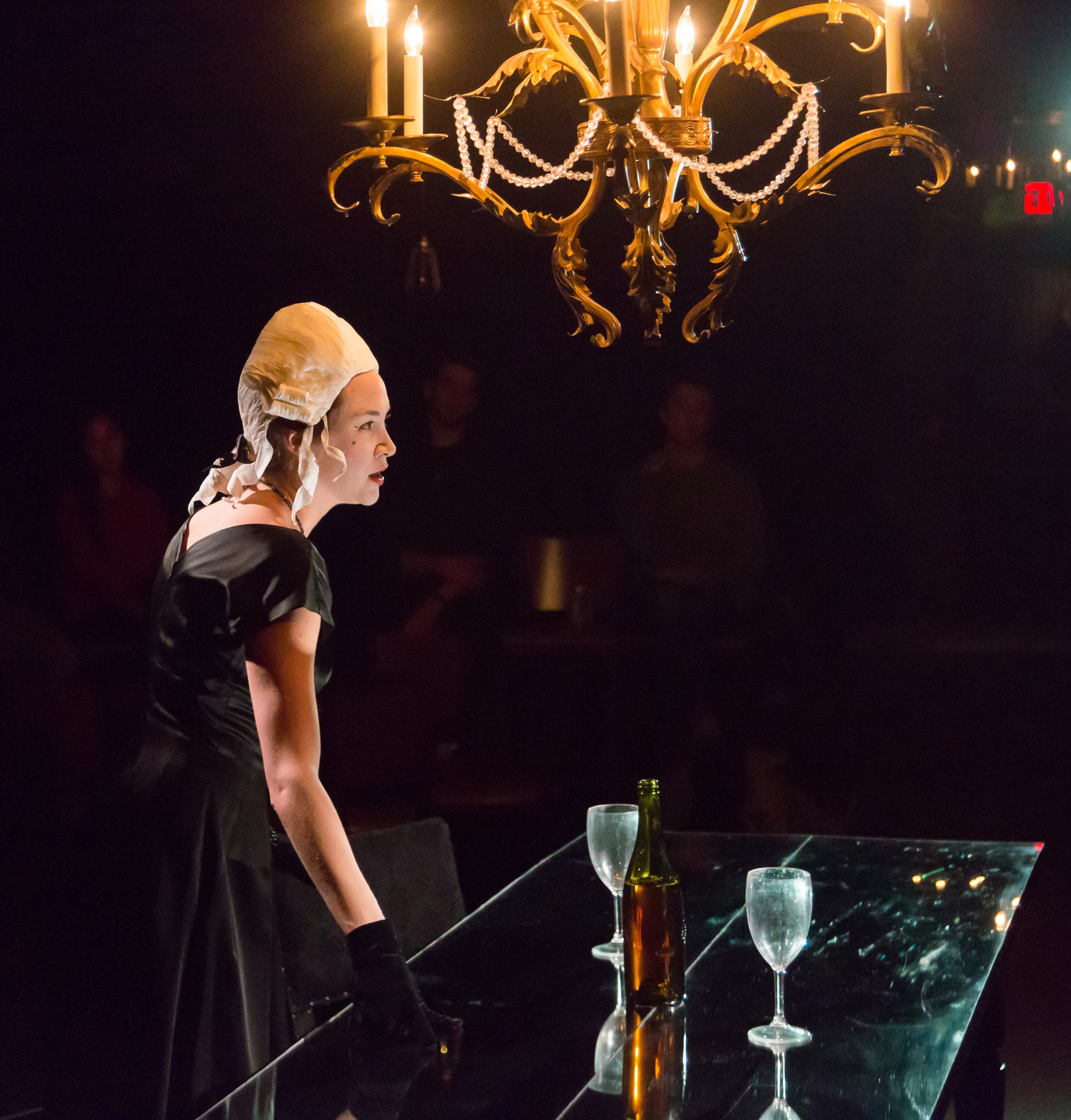Review of Make Believe the Make Happen at Yale Cabaret
Make Believe the Make Happen, the final show of Yale Cabaret season 47, allegedly presents a show by #KIDSDIDIT!, an Iowan theater group that works with kids. The group consists of Bubba McDowell (Taylor Barfield), Stephen Mendelsohn (David Clauson), Myantoinia Spampinato (Helen C. Jaksch), Einahpets Dnallor (Stephanie Rolland), and Ryker Metz (Nahuel Telleria), a spirited bunch who come off, at least a bit, as kid wannabes. They have earnestness and whimsy on their side, what they don’t have is the freshness of childhood, even if they are evoking their own.
It’s not easy being kidlike. The troupe aims for the surprising conjunctions that kids can hit upon effortlessly—such as dialogues between a bra and a tuba, or between a sack of flour and a manatee. The costumes and props are as lovingly ad hoc as one would expect, seeming to bear the marks of creative sessions in school art class and based on the wonders of construction paper and paste.
The in-the-know aspect of the show comes from knowing a) that there is an actual project some Yale School of Drama students are involved in that nurtures theatrical creativity in local children—it’s called the Dwight/Edgewood Project—and b) the cast of the show consists mostly of dramaturgs and tech folk—persons who, in various ways, have been instrumental in making many a Cab Show happen. In essence, Make Believe the Make Happen offers a celebration of the kind of seat-of-the-pants theater, involving sweat, inspiration, luck and good will, that makes theater happen in that basement we all love so much.
Yale Cab season 47’s tagline—Make Happen the Make Believe—suggests that theater at the Cab largely occurs thanks to the effort of getting done what the students believe can be done. The last show of the season’s reversal of the terms puts “believe” before “happen,” as though to say that belief is what makes it happen (kinda like the Peter Pan message—clap your hands if you believe). But, either way, the slogan raises the question: what makes us—the audience—believe in what’s happening before our eyes?
The idea that kids were involved in the show is just a ruse or, if you like, a conceit. If you believed it and brought kids, they might be in wonder at the show’s broad silliness and inspired by its DIY trappings, and the sense that anything goes. Though I’m not in the habit of comparing shows to other shows, what's missing, in MBtMH, are the giddy imaginative resources I experienced in Cab shows that had actual kid input: last year’s Mystery Boy, Chris Bannow’s adaptation of a novel written by an 11-year-old, or, in 2010, Strange Love in Outer Space, Christopher Mirto’s production of a play written by Janiya Antrum in the Dwight/Edgewood Project at age twelve (the show was also staged in New York’s Fringe Festival). In those shows, the kids’ view of things was evoked by participation rather than approximation.
The little girls sitting near me in the audience at Make Believe the Make Happen seemed to like best David Clauson’s absurdly passionate delivery of his song, and the underwater diving bell. I liked best Stephanie Rolland’s singing and the underwater contraption. The “unexpected” visit of Liddy (Sarah Williams) from the first show of season 47, Look Up, Speak Nicely, and Don't Twiddle Your Fingers All the Time, added a nice sense of closure, and a feeling of how long ago all that seems.
Make Believe the Make Happen
Conceived and created by #KIDSDIDIT!
Taylor Barfield; David Clauson; Emily Erdman; Irina Gavrilova; Helen C. Jakcsh; James Lanius III; Kate Newman; Jean Kim; Andrew Knaff; Tom Lackey; Maria Marques; Kiernan Michau; Joey Moro; Jason Najjoum; Libby Peterson; Stephanie Rolland; Jenny Schmidt; Caitlin Smith Rapoport; Nahuel Telleria; Sarah Williams
Yale Cabaret
April 23-25, 2015
The artistic and managing directors of Cabaret 48 have been announced and it’s an interesting mix of proficiencies: a director, Leora Morris, an actor, Julian Elijah Martinez, a dramaturg, David Bruin; managing director will be Annie Middleton.
We bid a fond adieu to the team of Cab 47—Hugh Farrell, Tyler Kieffer, Will Rucker, Molly Hennighausen—and wish them well in all their endeavors. Stay tuned for the annual “Cab Recap” in which I look back on my favorite contributions to the season in 12 different categories.





